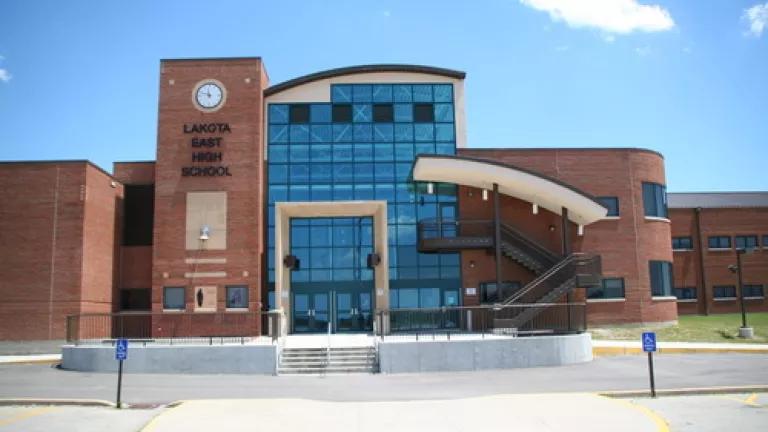A Jobs Plan, Too: NRDC's Groundbreaking Power Plant Proposal Can Create Tens of Thousands of New Jobs

On Tuesday, NRDC released its groundbreaking proposal to cut power-plant pollution in the US by 26 percent by 2020 and 34 percent by 2025. The plan got a lot of attention, and rightly so: It will generate benefits of $6-15 for each dollar invested. It will save thousands of lives and prevent thousands more emergency room visits and more than 23,000 asthma cases among kids and seniors each year. Importantly, it will help minimize the pollution that fuels global warming and the extreme droughts, wild fires, hurricanes and storms we’ve experienced far too many of this year.
NRDC's new power-plant pollution proposal can create tens of thousands of jobs in the fields of energy efficiency and renewable energy. The cost savings to energy consumers will be tremendous, too. Efficiency savings at Lakota, Ohio schools, pictured above, have helped the district preserve vital educational programs.
Still, one aspect of the plan has yet to be highlighted: its job-creation potential.
That’s right: Jobs. NRDC’s plan to cut carbon pollution under the Clean Air Act is also a jobs plan.
Given that some in Congress still insist EPA regulations are “job-killers”—this despite reams of evidence—you might wonder how our proposal has the potential to create tens of thousands of jobs.
The answer is simple: Energy efficiency and renewable energy are job-creating machines. Deploying them not only cleans our air and reduces our carbon pollution, it allows Americans to invest in their local communities.
How so?
Rather than sending money out-of-state or out-of-the-country to buy fossil fuels that endanger our kids’ health and disrupt our already fragile atmosphere, jobs in energy efficiency employ local people. Construction workers, many of them formerly out-of-work, insulate attics and block air leaks under sinks, while helping homeowners, landlords and tenants save as much as a third on their energy bills. Contractors and their staffs save schools hundreds of thousands of dollars a year in energy costs.
That’s money these schools can use to maintain class sizes, save teachers jobs and preserve vital educational programs. (Click here for a great example, from Lakota, Ohio.) So-called “testing and balancing”—fine-tuning building systems such as elevators and furnaces so they work at top efficiency—employs mechanics and engineers, many of whom have lost work in our terrible manufacturing downturn. You’ll note these jobs can’t be outsourced. No one can caulk your windows or retool your elevator motor from a shop overseas.
Energy efficiency’s job-creation potential is substantial. No less prestigious a business consulting firm as McKinsey & Company maintains we can create 600,000-900,000 jobs by 2020, simply by pursuing the tremendous efficiency potential we have as a nation. (They also affirm we can generate $1.2 trillion in energy savings, and cut our greenhouse gas emissions by 23 percent—the equivalent of taking “the entire US fleet of passenger vehicles and light trucks off the roads.”)
The investment in efficiency the NRDC plan would make possible is about one-fifth that McKinsey’s consultants are endorsing. Still, one-fifth of 600,000-900,000 jobs is nothing we should pass up at today’s unemployment rate.
The same can be said about pollution-free renewable energy. It’s one of the few bright spots in the nation’s limping-along jobs picture. Consider solar power. Between 2009 and 2012, jobs in the industry more than doubled. They are up to 119,000 in 2012, compared to 50,000 in 2009, making solar one of the country’s fastest-growing fields.
Compare that with coal, whose pollution our proposal would limit. The entire coal supply chain in the U.S.—from the mine to the coal yard to the power plant—employs approximately 200,000 Americans, according to data from the federal Bureau of Labor Statistics. This despite producing 42 percent of our nation’s electricity and 40 percent of our heat-trapping carbon dioxide.
All too often, politicians tied to the fossil fuel industry try to prevent beneficial programs like ours by insisting these programs will cost Americans jobs. Nothing could be further from the truth. By promoting cost-saving energy-efficiency and clean, renewable energy, our plan will create tens of thousands of jobs—jobs Americans can count on to raise their families, jobs Americans can be proud to hold.



